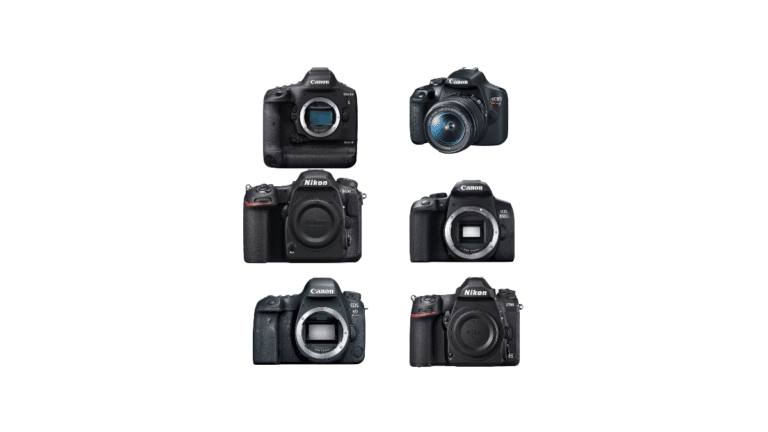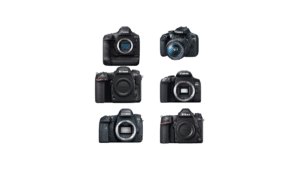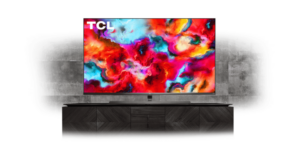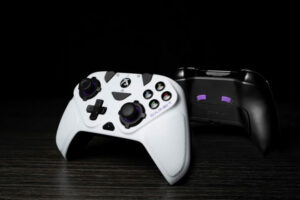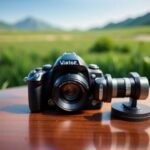What are you waiting for if you have a passion for capturing or clicking pictures and moments and getting your picture in perfect clarity and lighting effect? Grab one DSLR to fulfil your photo needs, and for that, we have mentioned the best suggestions for you to bet on without any doubt.
What will you see here?
Mechanism behind DSLR
While the sensor sizes of different DSLR cameras vary, these sensors are still massive enough to capture enough megapixels to blow the image quality of your smartphone camera out of the water.
DSLRs typically use phase detection autofocus. This method allows the optimal optics position to be calculated rather than “found,” as would be the case with contrast-based autofocus. Autofocus using phase detection is usually faster than other passive strategies. Because the phase sensor requires the same light as the sensor, it was only possible with an SLR design. With the introduction of the focus point step to detect autofocusing in mirrorless optical zoom cameras by Sony, Fuji, Olympus, and Panasonic, screens can now use both phases to detect and contrast-detect AF points.
Full-frame and APS-C sensors are the most common. Full-frame camera sensors that are the same size as 35 mm film are the industry standard. Because APS-C sensors seem slightly smaller, they have a lower focal distance known as the “crop factor.” This smaller field of view can be reimbursed with specific lens attachments, but it’s something to consider when looking for the best APS-C or full-frame DSLR. Let us dig into various DSLR cameras to know which to select for capturing the best moments of our lives.
Nikon D780
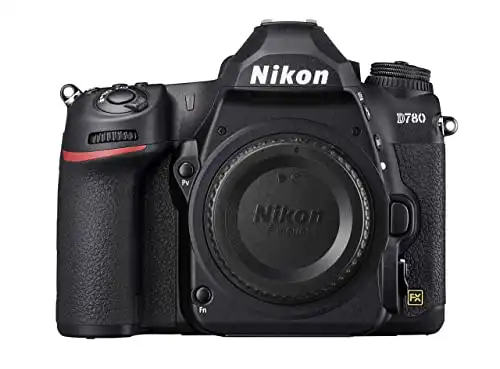 Nikon D780 Body
Nikon D780 Body
Although a replacement for the D750, one of the best DSLRs ever produced, is the Nikon D780. As you delve deeper, you realize it’s a much more capable device. Thus, a DSLR that has learned much from mirrorless. It is still structured around a 24MP sensor and 51-point AF system.
The Z6’s capabilities have been transferred to Nikon’s terrible F-mount in many ways, including greatly enhanced autofocus, video performance, and interval shooting. Dual SD card slots on the D780 are compatible with UHS-II cards for the quickest data transfer when taking high-resolution still photos at a maximum of 12 frames per second or recording 4K videos. While its mechanical shutter's maximum continuous shooting speed isn't particularly fast, its breakneck maximum shutter speed and quick, reliable, and consistent autofocus system make it relatively easy to capture still images of fast-moving subjects. Nikon has done an excellent job in producing a solid combination performer in the D780. The sliding swap surrounding the Live View button allows for quick switching from stills to video shooting. In movie mode, the back screen shows numerous video-related settings and the proper aspect ratio restrictions.
- Phase detection is built into the 24.5MP BSI CMOS full-frame sensor.
- 7 – frame shooting per second
- From the whole width of the sensor, UHD 4K may be captured at up to 30p.
- 51-point AF module supported by 180,000-pixel RGB metering sensor
- 273 point on-sensor PDAF in live view
- 3.2″, 2.36M dot touch-screen
- Shutter range of 900 to 1/8000 sec
- 10-bit video output over HDMI
- 2260 shots per charge with a viewfinder
- Dual UHS-II SD card slots
- Snapbridge Bluetooth and Wi-Fi system
- Dual AF systems
- Manual live view swapping
- Expensive
Canon EOS 1Dx III
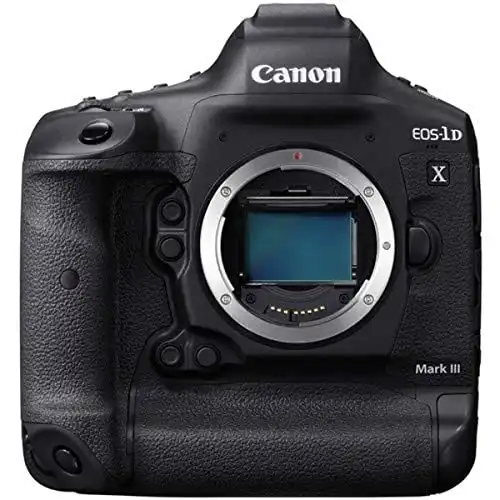 Canon EOS-1D X Mark III
Canon EOS-1D X Mark III
With its impressive 20MP full-frame sensor, 5.5K Raw video capture, built-in Wi-Fi, and eventually, other noteworthy new features, the EOS-1D X Mark III represent the most recent model. However, its introduction coincides with Canon turning its attention to the creation of mirrorless cameras and lenses, so if your desire for a new 1D isn’t urgent, you should consider that. Canon's latest high-end, ultra-tough, hyper-fast DSLR is the EOS-1D X Mark III. From the outside, it appears to be similar to prior EOS-1D bodies dating back two decades. But there are radical changes on the inside. This camera offers amazing video functionality, can shoot more than just 8-bit JPEGs as your "finished image," and includes AF subject acknowledgement machine learning - based on both OVF and live view shooting. It has two grips and two sets of shooting controls, so you can easily find icons and dials by touch when shooting in landscape or portrait mode.
And, despite being a large, double-grip DSLR, it features a competent mirrorless camera in Live View mode if you have the power to hold it out in front of you for extended periods of time.
- Updated 20.1MP CMOS sensor with Dual Pixel AF
- Digic X processor
- HEIF 10-bit recording (supports HDR display at smaller-than-JPEG sizes)
- 16fps bursts (viewfinder), 20fps bursts (Live View) with autofocus
- All-new mirror mechanism to reduce vibration and blackout
- CIPA rated to 2850 shots with the viewfinder, 610 with Live View using LP-E19 battery
- Shutter rated to 500k shots
- Weighs 1440g
- 191-pt viewfinder AF system with new ‘square pixel’ design, 155 cross-type points, Face + head detection, sensitivity to -4 EV, all topics support F8 shooting
- New AF ‘Smart Controller’ built into the AF-ON buttons
- 5.5K/60p 12-bit Raw video recording, 4K/60p 4:2:2 10-bit H.265/HEVC recording
- Dual CFExpress card slots for virtually unlimited buffer in most situations
- EF lenses are no longer in development
- Requires expensive CFexpress memory cards
- HIF image format not widely supported
- The future is mirrorless
Canon EOS Rebel T7
Canon EOS Rebel T7/ 2000 D is available for $399 with the product dimensions of 3.1 x 5.1 x 4 inches, weighing 1.04 pounds. The camera has a 24.1 MP still resolution, and 30 seconds maximum shutter speed. The EOS Rebel camera has built-in Wi-Fi and NFC, making it simple to share content and connect to other compatible devices. For excellent self-portraits, you may operate the camera hands-free by utilizing a compatible smart device to control it remotely. Rich details and vivid colors can be captured thanks to the 24.1 Megapixel CMOS sensor’s size and high resolution. Even in low light, the DIGIC 4+ Image Processor produces quick performance and lowers image noise.
EOS Autofocus, Intelligent auto mode, and camera compatibility:
With the EOS Rebel T7 camera’s quick and precise autofocus, you may improve your filming experience by being prepared to record the action as it unfolds. Scene Intelligent Auto mode provides correct exposure and enhancements to assist highlight the beauty in almost any scene, freeing you up to focus on image composition rather than setting-related issues. All Canon EF and EF-S lenses work with the EOS Rebel T7 camera, opening up a wide range of creative possibilities for capturing everything from expansive landscapes to distant wildlife and more.
Beautiful HD videos and Optical viewfinder:
Record spectacular Full HD video in a range of formats and frame rates, including 30p for a realistic appearance. The camera’s broad ISO range enables secure shooting in almost any lighting. The optical viewfinder on the EOS Rebel T7 camera enables you to swiftly compose and take a picture in almost any circumstance. It also makes it easier for you to see clearly in direct sunshine what the lens views.
- Integrated WiFi and NFC technology
- AI Servo AF and 9-Point AF system
- 95% viewing coverage Optical viewfinder
- Does not come with a memory card
Nikon D500
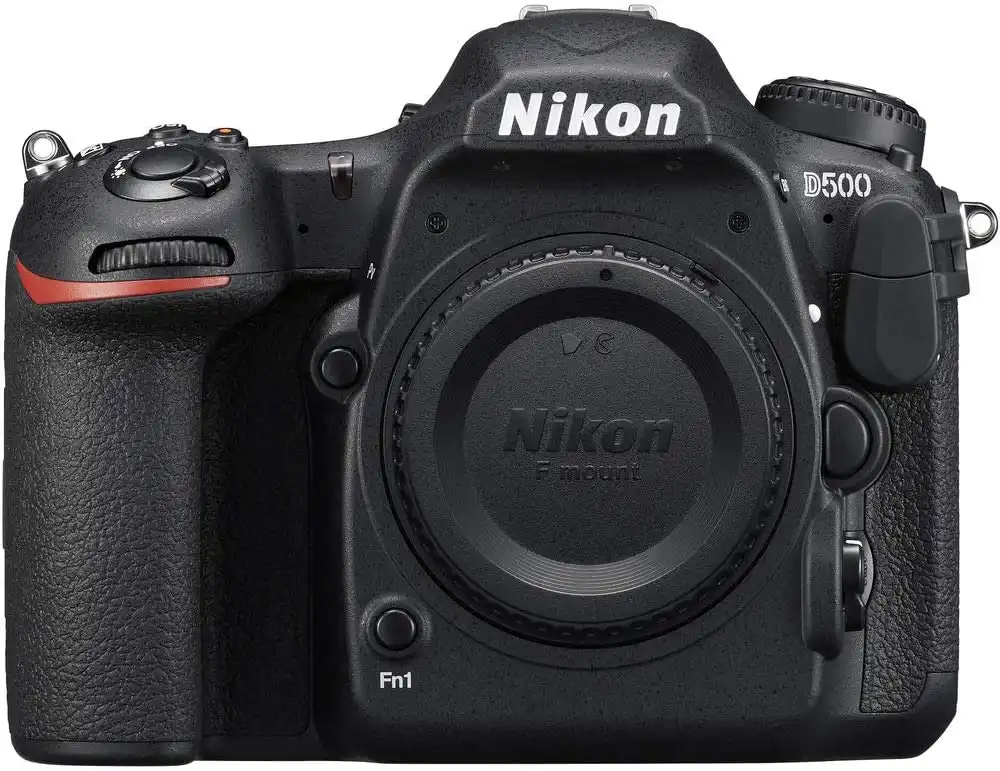 Nikon D500 DSLR Camera
Nikon D500 DSLR Camera
The robust, professional-oriented camera body of the Nikon D500 houses a wide range of photography capabilities. Because of its superior 153-point AF system, rapid continuous shooting capabilities, and 4K UHD video capture all-around DSLRs, Nikon has released in a long time. The majority of the device's equilibrium potential is focused on sports as well as high-speed shooting, to significant advancements made to the autofocus system, shooting rate, field of view, and connectivity options. This broadens the phone's utility beyond a narrow market. The D500's AF system presently includes 2 variables for fine-tuning autofocus tracking behaviour, enabling the user to specify the type of subject movement as well as the correct response to some other item blocking the targeted subject. Existing Nikons only allow you to set the length of time, implying that Nikon is attempting to expand the range of shooting scenarios for which the AF system might be streamlined. The D500 is Nikon's true flagship model in the APS-C ("crop sensor") format camera body lineup and the undisputed, long-awaited replacement for the D300S (has it been 7+ years?). Undoubtedly, D500 is designed to be used and viewed as a mini-D5. Consider the names, the simultaneous announcements, the new auto-focus system shared by both cameras, the inclusion of XQD memory cards in both cameras, and even the identical resolution 21MP sensors, among other similarities.
- 20.7MP APS-C sensor
- 100% coverage viewfinder with 1.0x magnification
- 2.36M-dot tilting touchscreen display
- USB 3.0 connector
- 153 point AF component with 99 cross-type points
- Anti-flicker option for working under artificial lighting
- Wi-Fi and Bluetooth connectivity, as well as NFC setup
- Microphone and headphone jacks
- AF point joystick 180,000-pixel RGB sensor for meter reading and subject recognition
- Shooting at 10 frames per second for up to 200 shooting (lossless compressed 14-bit Raw to XQD card)
- An opsonisation crop of the sensor produces 4K (UHD) video.
- Snapbridge wireless transfer needs some work
- Video could use more finesse
Canon EOS 850D
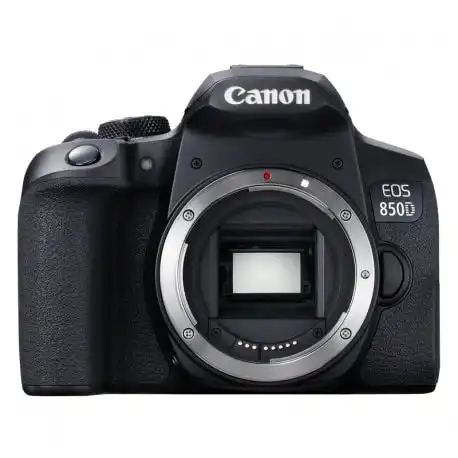 Canon EOS 850D (Rebel T8i) DSLR Camera
Canon EOS 850D (Rebel T8i) DSLR Camera
The Canon EOS 850D is a compact, versatile, and wireless DSLR that boasts a quick DIGIC 8 processor and also, can shoot continuously at 7 frames per second. Although it has Canon’s tried-and-true 24.1-megapixel Dual Pixel CMOS APS-C sensor, the 850D differs from the 800D in that it includes Intelligent Tracking (iTR) autofocus technology and, of course, new 4K movie capabilities. Although 4K may be new to Canon DSLRs at this price point, mirrorless cameras in the market have at least one camera generation worth of 4K capability. The Canon EOS 850D is not the lowest entry-level DSLR camera available. The EOS 250D and Nikon D5600 are both smaller and lighter. Mirrorless competitors are a further proportion smaller, particularly in depth and height. The 24-megapixel Canon T8i has some control improvements on its own rear panel, along with a new rear control dial instead an AF-On button, but from most angles, it looks very similar to its predecessor. NFC has been abandoned in favour of constant Bluetooth connectivity, which speeds up connection times similarly to how NFC used to. Wi-Fi but also Bluetooth connectivity are still available. The Canon EOS Rebel T8i is positioned as more of an all-arounder camera for fans than a true beginner DSLR. Still, it's also appealing to existing Canon users who are upgrading from cameras like the Rebel T6 or T7.
- 24-megapixel APS-C image sensor
- 7 fps continuous shooting, or 7.5 fps in live view
- 45 point, all cross-type phase-detect AF
- EF or EF-S lens compatibility
- 0.51x pentamirror viewfinder with 95% coverage
- 3.0″ vari-angle touch-screen LCD
- 24p 4K video with 1.6x crop, or full-sensor 1080p60
- 800 shot battery life, or 310 shots with live view
- ISO 100 to 25,600, extends to 51,200
- Strong crop with 4K video and digital IS.
- The price is a little high
- Doesn’t match the features/specifications of mirrorless cameras.
Canon EOS 6D Mark II
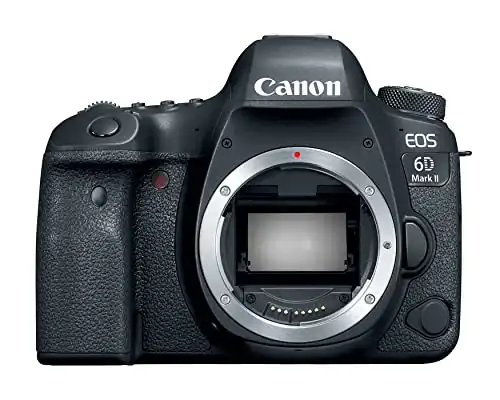 Canon EOS 6D Mark II Digital SLR Camera
Canon EOS 6D Mark II Digital SLR Camera
DSLR with full-frame sensor: Canon EOS 6D Mark II. It boasts an excellent overall battery life, is well-built, is comfortable, and has an easy-to-use menu system. It also produces exceptional image quality, with a relatively high dynamic range and no visible noise or graininess in photos. However, Its video capabilities are unfortunately relatively constrained, with poor FHD video quality and no compatibility for 4k recording. It’s also rather large and hefty, making it difficult to carry around for long periods, especially when using the kit lens. The EOS 6D Mark II is significantly improved over the original 6D, but more in terms of functional performance and speed than image quality. It's a fantastic camera, but its price puts it up against some excellent cameras. It's an excellent all-arounder that would make an excellent 'first' full-frame DSLR. The original Canon EOS 6D marked the birth of a new purebred of cameras, one that tried to introduce beginner, enthusiast, and amateur photographers to the concept of an affordable full-frame system. For those of us who are put off by the prospect of spending thousands on pro or semi-pro systems, the 6D provided an affordable alternative that received positive feedback from the industry and the photography society. Canon's latest full-frame DSLR, the EOS 6D Mark II, is geared at innovative amateurs and enthusiasts, as well as unique skills for a second Canon DSLR body. Its all-new 26MP sensor features Dual Pixel new tech for accurate autofocus during live view shooting, and it continues to gain the crop-sensor EOS 80D's 45-point autofocus system for viewfinder shooting. A fully articulating touchscreen, built-in Wi-Fi, GPS, and burst shooting at 6.5 frames per second round out the package.
- Full-frame 26-megapixel image sensor.
- 45-point autofocus system.
- Dual Pixel AF in Live view.
- 6.5fps continuous shooting.
- Vari-angle LCD.
- Integrated Wi-Fi and GPS.
- Full-frame 26-megapixel image sensor.
- 45-point autofocus system.
- Dual Pixel AF in Live view.
- 6.5fps continuous shooting.
- Vari-angle LCD.
- Integrated Wi-Fi and GPS.
Is a DSLR still worthwhile purchasing?
The DSLR will continue to capture many incredible photographs for some time, even though mirrorless devices are the future wave. This is due to the DSLR’s legacy of optics, functionality, and a broad range of models that are still available to fit any budget.
Is a DSLR camera superior to the iPhone 13 camera?
The overall quality of an image taken with an iPhone is worse than with a DSLR camera, even though computational photography on iPhones may make an image look fantastic. Naturally, it still matters whether you operate a DSLR camera properly to obtain a better shot than an iPhone.
Are smartphones taking the place of DSLR?
Sony predicts that by 2024, the image quality from smartphones will likely overtake that of their single-lens reflex competition. On the contrary, smartphone cameras and DSLRs have been growing in different directions for several years.
Conclusion
For seasoned hobbyists and experts, a wide variety of cameras are available today. From entry-level DSLRs to those used in industries like sports and fashion, however, everything is available for purchase, and smartphone cameras get better every year. Mirrorless goods are also becoming more and more popular.
From compact and bridge variants, DSLRs are an improvement. If you look for different options, there are many that you can choose from and rely on based on your preferences, but these recommendations described above are by far the best option. It would be best if you compared the cameras by carefully considering the advantages and disadvantages of each camera before choosing the best one for you.

